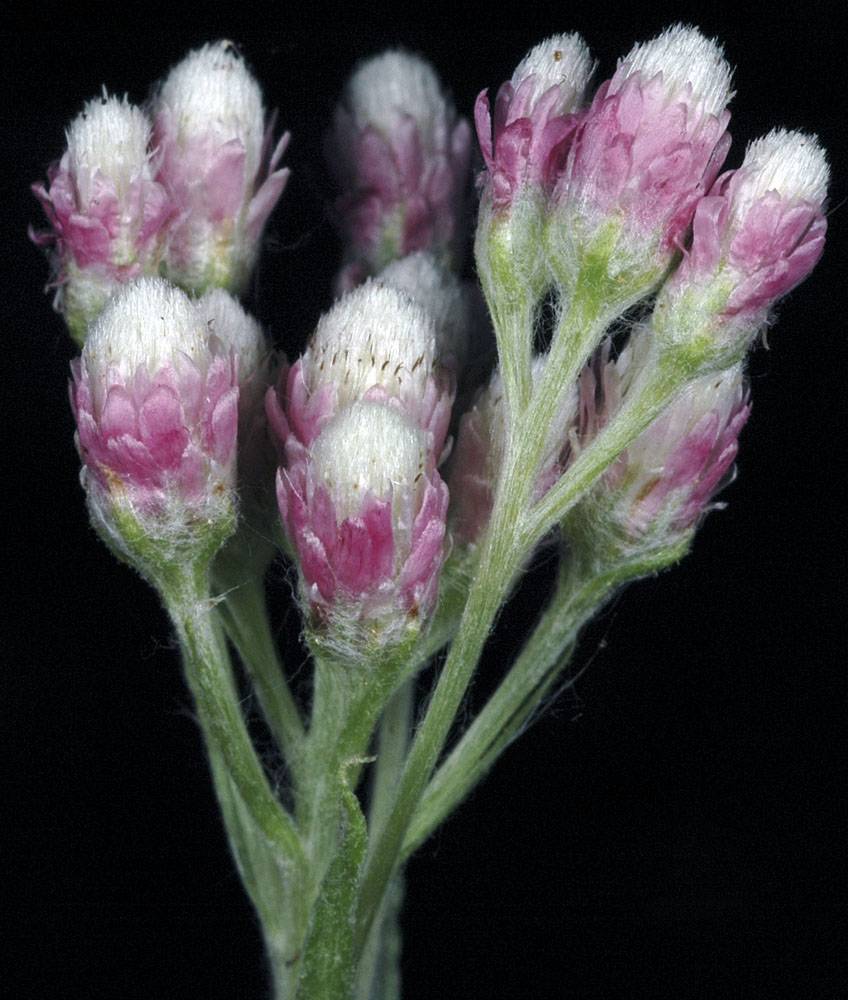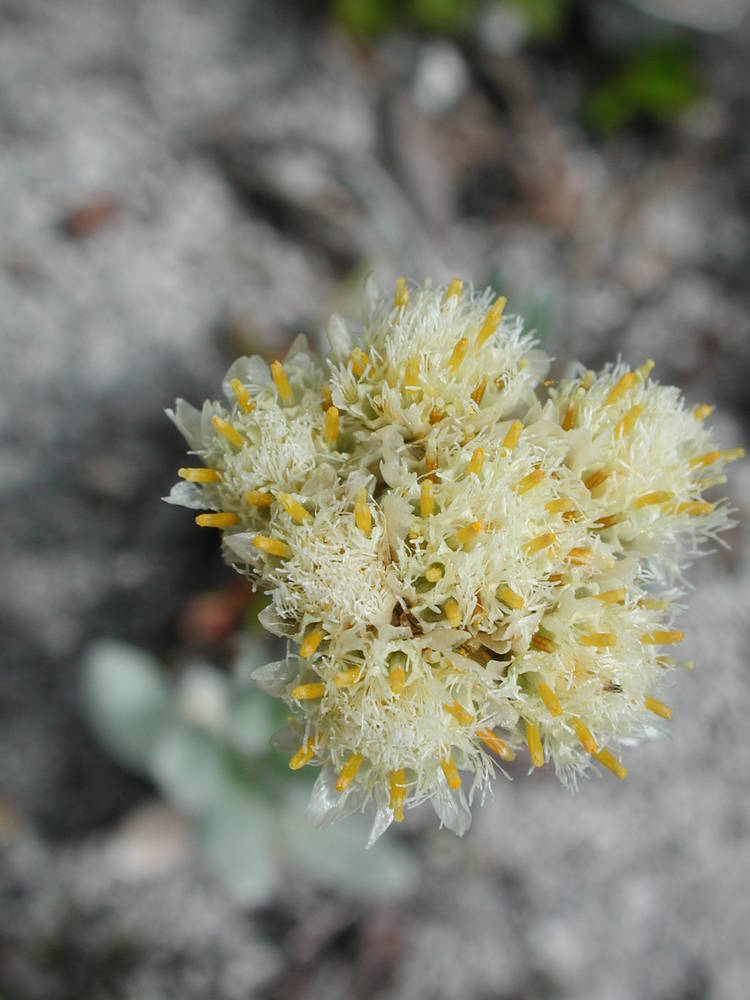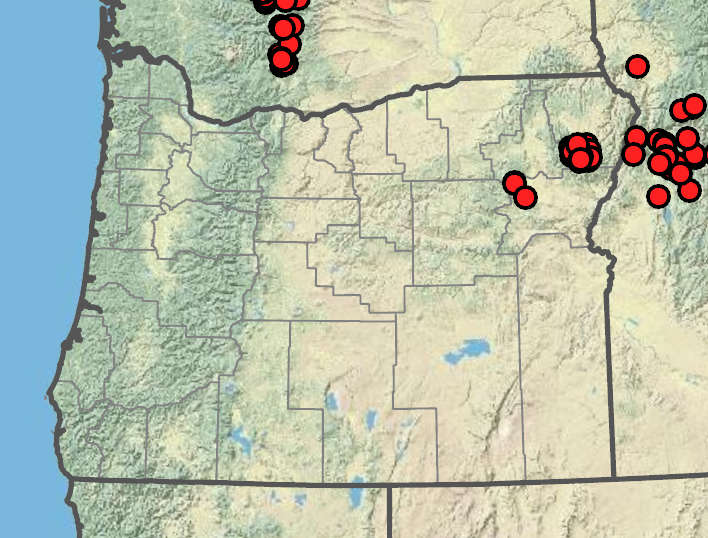Antennaria microphylla
(synonym of Antennaria rosea)
Antennaria lanata
littleleaf pussytoes, rosy pussytoes
woolly everlasting, woolly pussytoes
5–30 cm, rarely stipitate glandular distally.
3–15(20) cm, sometimes stipitate glandular.
usually forming rosettes, spatulate to oblanceolate, 8–40 × 2–10 mm, 1-veined;
tips mucronate;
surfaces usually gray-pubescent, adaxially sometimes green and glabrous.
not rosette-like, narrowly oblanceolate, 10–60(100) × 3–12 mm, 3-veined;
tips acute;
surfaces gray-woolly to tomentose.
linear, 5–36 mm;
tips acute to subulate, usually not flagged.
linear, 5–40 mm;
tips acute; middle and distal flagged.
mostly glabrous to pubescent, staminate heads 4–8 mm, pistillate heads 4–10 mm.
pubescent proximally, staminate heads 4.5–6 mm, pistillate heads 5–8 mm.
distally white to yellow, green, red, pink, gray, or rarely brown;
tips rounded to acuminate.
proximally dark or light brown to olive, distally light brown, cream, or white;
tips acute to acuminate.
0.7–1.5 mm, glabrous to papillate.
1–1.6 mm, glabrous.
3–20 per stem; in corymb-like arrays.
3–9 per stem; in corymb-like arrays.
=28, 42, 56, 70.
=28.
Antennaria microphylla
Antennaria lanata
Rocky areas, meadows, forests, disturbed areas. Flowering May–Sep. 200–3000 m. BR, BW, Casc, CR, ECas, Lava, Owy, Sisk. CA, ID, NV, WA; north to AK, northeast to Greenland, east to NE, southeast to NM. Native.
Here we take a more inclusive approach and include within this species plants that some floras treat as A. rosea.
Open woods, meadows, slopes. Flowering Jun–Sep. 2100–3000 m. BW. CA, ID, WA; north to British Columbia, northeast to Alberta, east to WY. Native.
This species is easily distinguished by its woolly pubescence and prominent flags on the middle and distal cauline leaves.
Katie Mitchell, Stephen Meyers
Katie Mitchell, Stephen Meyers





